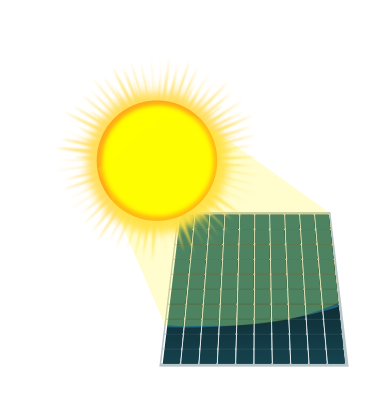My main account is here. I’m also using this one: solo@piefed.social, because I really like the feed feature.
Btw I’m a non-binary trans person [they/she/he].
- 208 Posts
- 90 Comments

 1·2 months ago
1·2 months ago- If I got this right, from in table 1, p3 one could get to the conclusion that to decommission photovoltaics creates 7 times more CO2 (more precisely g CO2e/kWh), than decommissionning a nuclear plant for decades, as shown above. It made me wonder how they arrived to these measurements. But the link to the study for the nuclear is dead (see Heath, Garvin A., and Margaret K. Mann. 2012). So this cannot be verified.- Having a potential solution in the works for nuclear waste is very different from what you said, which was: Nuclear waste is not and has never been a real problem.
Bye-bye now
Edit: The strikethrough, because it looks like the decommissioning of nuclear power plants was not reliably assessed after all. To be more precise, this is the 2012 meta study that is used for the g CO2e/kWh from nuclear decommissioning, and that I had difficulty finding. It clearly states:
Decommissioning was not usually described in detail; when described, most seem to closely resemble only “immediate dismantling,” not full decommissioning (see the Downstream Processes section of the supporting information on the Web).

 2·2 months ago
2·2 months agoThe lifecycle emissions of nuclear plants are similar to (…)
The link you provided talks about something more specific than what you just said. It’s about the Life Cycle Greenhouse Gas Emissions from Electricity Generation. This means that the decommissioning of a nuclear plant for example is not taken into account for these emissions, and it is well known that decommissioning a nuclear power station can easily take several decades (example from world nuclear news)
Nuclear waste is not and has never been a real problem.
The links I added above about France tell another story.
Edit: I looked a bit more into decommissioning and found the following from the International Atomic Energy Agency, and thought of sharing for easier visualisation


 21·2 months ago
21·2 months agoIn terms of cleanness it is also incredibly clean.
I believe nowadays it would make more sense to compare nuclear to renewable energy, not coal. Apart from that it’s important to keep in mind the nuclear waste problem.

 112·2 months ago
112·2 months agoBill Gates is a notorious capitalist. As mentioned in this article:
Gates sees nuclear power as a way to provide data centers with the power they need as well as to lower electricity costs.
He only cares about his projects and money, definitely not about people. See:
Tell Bill Gates: Stop Microsoft’s partnerships with the Israeli Military and ICE

 5·2 months ago
5·2 months ago“Fast action” in what sense? It looks like the nuclear phase-out in Germany started decades ago.
The history behind Germany’s nuclear phase-out
The nuclear phase-out is as much part of the Energiewende (energy transition) as the move towards a low-carbon economy. (…) a majority of Germans is still in favour of putting an end to nuclear power.
after 1989 no new commercial nuclear power stations were built

 2·3 months ago
2·3 months agoI don’t have access to this articles, I get a paywall after a few sentences. Same with the archive link. Any ideas how to access it without a subscription?

 4·3 months ago
4·3 months agoI am not too sure I understand what your objection to this article is. Ok gas is considered sustainable under some conditions. This doesn’t seen to me like something contradicting that the EU Court ruling on Taxonomy sets a dangerous precedent. For me this is the point.
Did I get something wrong?

 2·4 months ago
2·4 months agoAh ok, thank you for clarifying that!

 2·4 months ago
2·4 months agoThis discussion has fundamentally very little to do with the energy transition and is more generally about destructive mining practices
What is called energy transition (I believe energy addition is a more accurate term) needs several elements that come from mining. So I am not sure I understand why you consider that mining should not be part of the conversation, since it is a necessary step.
Btw I think I don’t understand what you mean with your last sentence.

 2·5 months ago
2·5 months agoSo, again, what are they trying to argue here? The only environmentally responsible option is to leave Gaza destroyed?
From the study itself (4. Discussion & 5. Concluding remarks), this is not what I got. On the contrary, it seems to me like they try to make some calculations/estimations/evaluations so that this is something that takes place.

 5·5 months ago
5·5 months agoThe point of this study, to my understanding, is to calculates some of the aftermath of this ongoing genocide, concerning debris, carbon emissions, time frames, and implications for rebuilding. No?

 2·5 months ago
2·5 months agoIs this supposed to sway eco conscious genocide supporters?
This is not the way I understood this article. It seems to me it is one more argument for the case of continuous ethnic cleansing for so many decades.
If we agree that
most frequently, however, the aim of ethnic cleansing is to expel the despised ethnic group through either indirect coercion or direct force, and to ensure that return is impossible,
then by bombing all buildings, homes and infrastructure, they force people to go somewhere else and in the same time restrict them from coming back, since there is nothing to come back to.
So in this study, they actually measure the not coming back for decades part
Edit: I did several edits. I stop now.

 3·5 months ago
3·5 months agoThe following part is very indicative
“Only 17 percent of the 169 SDG targets are currently on track,”

 1·5 months ago
1·5 months agoIn this link, they also mention the sourcing of materials, but they don’t really talk about it. The focus is on recycling.

 3·5 months ago
3·5 months agoI have the impression that in the EU what they care more about is having a constant supply and recycling. At least this was my understanding from the European Critical Raw Materials Act.
Maybe there’s another piece of legislation that tackles the issue of how these materials are mined, but I don’t know about it. So if anyone does, please share.

 31·5 months ago
31·5 months agoI didn’t post the article. I just replied to your comment.
Edit: Just realized, am I vaguely accused of something undefined?

 61·5 months ago
61·5 months agoStop getting caught up in the narcissism of small differences, and focus on solving the fucking problem.
The problem is phasing out fossil fuel, and now. Nuclear power plant take so long to plan and build that using them as solution to the climate emergency is only a way to prolong the use of fossil fuels. We no longer have the luxury of time.





The scientific community is not a unified body, so having scientists questioning any scientific model does not seem like a “wow” moment. But, when the discourse starts including strong vocabulary, admittedly I start questioning/researching claims. And I appreciate it when studies conclude by saying things like: cautious of interpretation is needed, or further studies are warranted, etc.
Apart from that, sure, maybe the LNT model needs some re-evaluation, maybe not - I dunno, time will tell. Still, to my understanding, one problem with ionising radiation is that the dosage received by people is not always as tightly controlled as needed for it to be safe, despite all efforts. Not even in work environments.
For example: